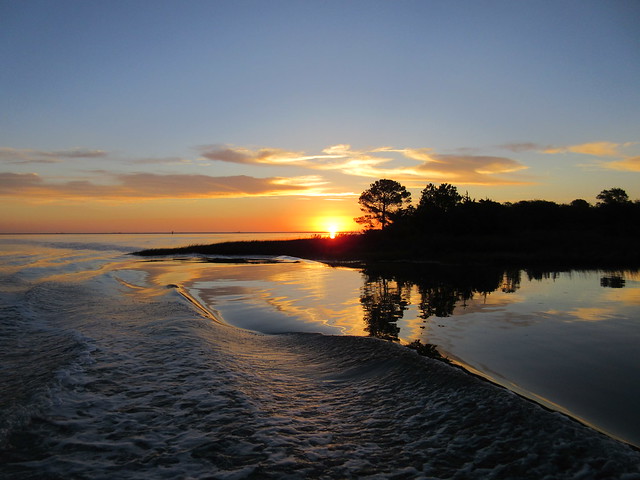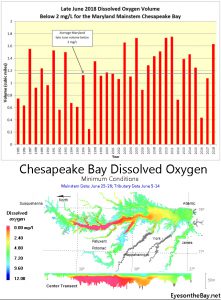Late June 2018 Hypoxia Report

by Peter Zitta
As anticipated, dissolved oxygen conditions in Maryland’s portion of the Chesapeake Bay mainstem worsened in late June.
During its twice monthly monitoring cruises, the Maryland Department of Natural Resources found that hypoxic water volume (areas with less than 2 mg/L oxygen) was 1.63 cubic miles, which is 42 percent greater than the late June average of 1.15 cubic miles, and an increase of 0.63 cubic miles from early June.
An additional hypoxic volume of 0.15 cubic miles was observed in Virginia’s portion of the bay. No anoxic zones (areas with less than 0.2 mg/L oxygen) were detected. The greatest amount of bay hypoxia is usually observed in early July.
Worsening conditions are likely attributable to higher than average spring flows, including almost double the normal rainfall in May. This additional rain and runoff delivers more nutrients, which fuels algal blooms, and in turn consumes oxygen when they decay. The delivery of high volumes of freshwater also acts to increase column stratification that can inhibit atmospheric oxygen in the surface layers from mixing into deeper waters.
In the beginning of June, National Oceanic and Atmospheric Administration, U.S. Geological Survey, University of Maryland Center for Environmental Science and University of Michigan scientists predicted a slightly larger than average hypoxic volume to higher spring flows and nitrogen loading from the Susquehanna and Potomac rivers.
Scientists and natural resource managers study the duration and volume of hypoxia to determine possible impacts to bay life, including crabs, fish and oysters.
Each summer, the department computes these volumes from data collected by Maryland and Virginia monitoring teams. The Virginia mainstem is monitored by Old Dominion University under contract to Virginia Department of Environmental Quality. Data collection is funded by these states and the U.S. Environmental Protection Agency’s Chesapeake Bay Program.


 1-888-373-7888
1-888-373-7888 233733
233733